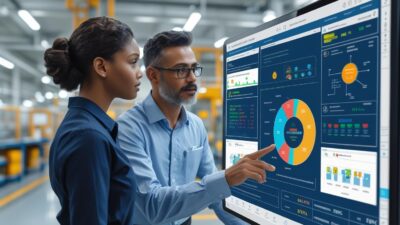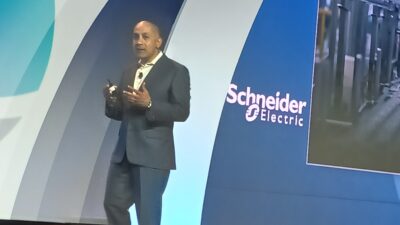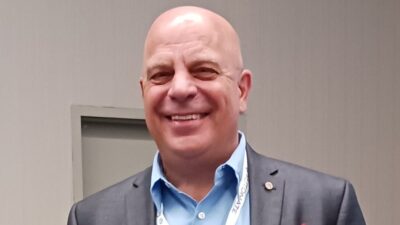A major U.S. dairy producer contacted Seiberling Associates, Inc. in December 2005 to replace the process and clean-in-place (CIP) control system for one of its facilities. The existing control system was an obsolete relay-based system that was installed when the plant was constructed in the 1960s. Although the system had served the plant well, it was becoming increasingly difficult to maintain...
A major U.S. dairy producer contacted Seiberling Associates, Inc. in December 2005 to replace the process and clean-in-place (CIP) control system for one of its facilities. The existing control system was an obsolete relay-based system that was installed when the plant was constructed in the 1960s. Although the system had served the plant well, it was becoming increasingly difficult to maintain and troubleshoot.
The client made the business case for the new process/CIP control system replacement project due to multiple shortcomings experienced with the old system. The case for change included:
The control system was difficult to modify, since all changes involved hard wiring for process control modification of a propriety system for CIP control.
Control system changes and the related documentation had been lost or was no longer up to date, impacting the plants ability to routinely maintain or promptly troubleshoot even the simplest problems.
The pneumatic solenoid valves and air lines, after years of service had started to fail and operators were using “hot” air lines to operate pneumatic valves. The use of hot air lines meant management had lost control of process and CIP functions, and system reliability and repeatability.
There were no interlocks between process and CIP functions, and as a result the plant had intermittent issues that resulted in product loss and production downtime.
The old system had no documentation of operator actions and no way to track product consistency.
The facility concluded that if the plant wanted to expand production and stay viable, a new control system needed to be installed. Seiberling Associates, Inc. proposed the replacement of the existing systems with a Rockwell Automation Allen-Bradley ControlLogix programmable logic controller (PAC), and Wonderware ArchestrA platform serving as the human machine interface (HMI) and data collection system.
The new system would bring the benefits of a modern hardware platform while permitting integration of process/ CIP operations so interlocks and quality checks could be performed, ensuring product integrity and quality. It would enable the application of sophisticated control schemes, provide useful operational data for the operators, and collect and report process production and CIP data to meet the requirements of 21 CFR Part 11 and the Bioterrorism Act.
Phased Implementation
The project work initiated with the definition of a staged plan: Commission a new control system in a 45-year-old plant while maintaining 24/7 production schedules and product quality during the transition. The plan involved a number of smaller stages, defined to have minimal impact on the production schedule. Since CIP is an integral part of production, a decision was made to use the CIP units and the equipment they cleaned as the boundaries for each stage of implementation. In other words, production equipment cleaned by a specific CIP unit would be converted at the same time as the CIP unit.
The Discovery Phase of the project involved documenting the plant’s existing functions to determine the CIP skids allocations to specific process operations. This required multiple plant trips to survey the existing process piping, CIP circuits and the related control systems. The team conducted interviews with operators and supervisors to ensure existing functionality would be incorporated into the new system.
The Detail Design Phase involved the development of a complete set of control panel and field installation drawings with specifications for competitive bid purposes. This effort included the necessary definition for the replacement of all existing interconnecting wiring and pneumatic air piping from the existing field devices back to the new control panels. The Construction Phase Schedule included about two months to install all new wiring and pneumatics in parallel with the old, in anticipation of cut-over weekends when the old would be disconnected and the new system would take over.
The Construction Phase was scheduled in parallel with the project team’s efforts to define the PAC and HMI software requirements and plan for the Commissioning Phase. During this time, multiple meetings were held with operators, supervisors, facility management and contractors to define an implementation schedule. This step was critical because without contractor and plant buy in on the schedule, there would be potential for lost production, which could cost the plant customers and business.
The Software Development Phase included client meetings to ensure alignment in terms of process / CIP functions, recipe development, and HMI requirements. After development was complete, a three-day software factory acceptance test was performed in-house, allowing for resolution of code discrepancies prior to site installation.
The complete plant control system conversion was staged over five weekends that included 24/7 support to provide both for system commissioning, process / CIP operations optimization and operator training. Ongoing support of the new control system is via VPN access.
The plant has realized many benefits from the new control system:
Current drawings and system documentation, which assists in maintenance, enables prompt troubleshooting, and reduces related downtime.
Tracking operator actions and controlling production to a tighter set of parameters improves process reliability and reduces product loss,
Automated product tracking and quality control checks assist in plant supervision efforts to better control product quality.
The new system provides the foundation to add new production equipment in a timely and cost effective manner, which will keep the plant viable into the future.
Online
www.seiberling.com
www.rockwellautomation.com
www.wonderware.com
Author Information
Jeff Pearse is a control systems project manager with Seiberling Associates, Inc., in Beloit, WI. He has been involved in numerous control system replacement projects in clean and sterile processing facilities, and received his Bachelor of Science in Electrical Engineering from Iowa State University.



